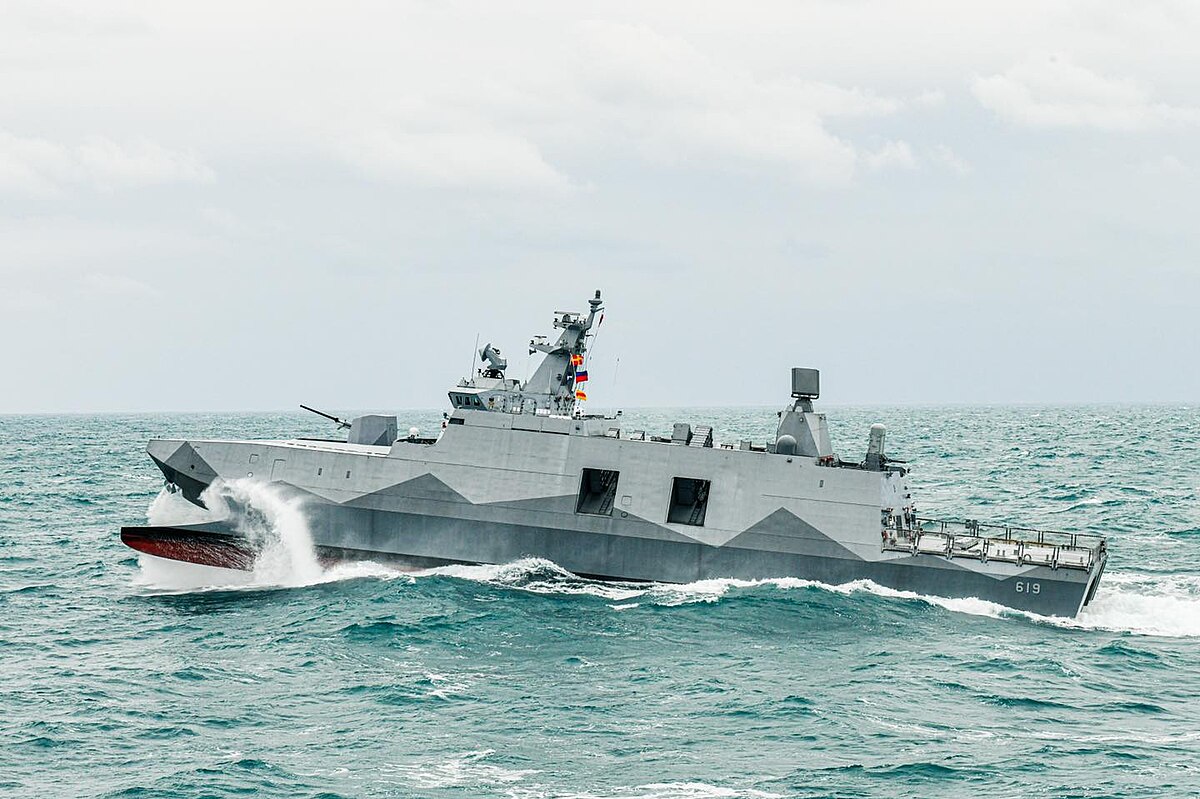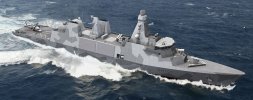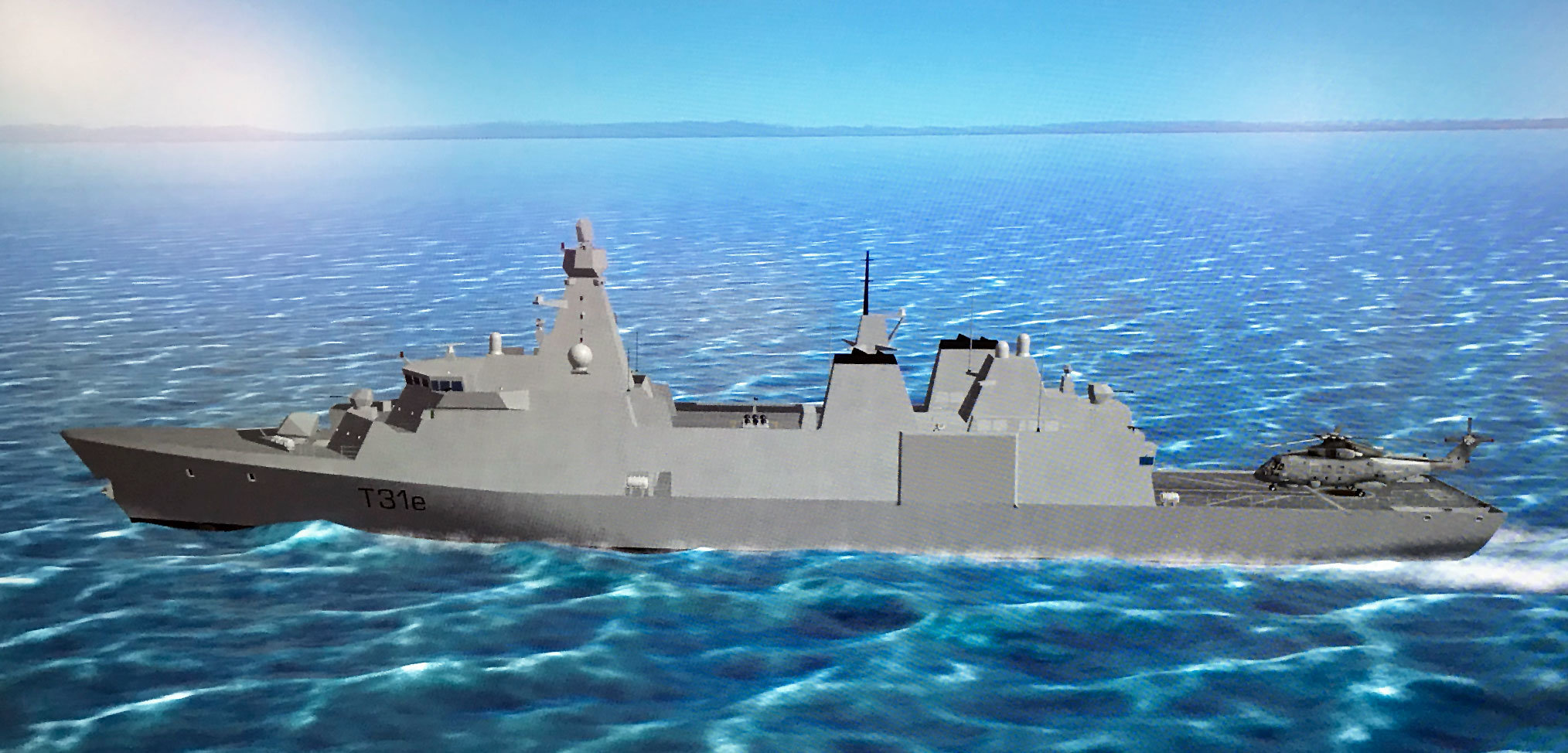rukkaskikka
Majuri
Strazh-konsepti voisi nimensä ja bakronyyminsä BOSS (Border and Offshore Submersible Sentry) perusteella luokitella sukelluskykyiseksi ulkovartiolaivaksi. Myös Rubinin tiedotteessa painotetaan rauhanajan käyttöä. Aseistus on kevyehkö, neljä 324 mm torpedoputkea, havainnekuvien perusteella tykki saattaisi olla 30-millinen, ohjukset kooltaan ja kantamaltaan ehkä lähinnä venäläisiä vastineita Spike ER:lle tai Hellfirelle. Sukellusominaisuudet tuskin ovat jo hinnan karkaamisen välttämiseksi lähelläkään esimerkiksi Kilo- tai Lada-luokan tasoa.
Rubinin tiedote:
This version is maximally armed with autocannon, two guided-missile launchers and four 324 mm torpedo tubes. Such weapon package makes BOSS a formidable enemy for even much larger ships. As in other versions, this ship has two pressure-proof multifunctional hangars for boarding teams boats and equipment, unmanned aerial vehicles or other payload. Both radar and sonar can be used for search and target acquisition, allowing discreet detection and approach.
The ship can be used in anti-submarine exercises and training of crews for classical submarines. The cruising range is up to 4000 miles at 10 kt, and can be increased on Customer's request.
As military budgets decrease due to pandemia and its consequences, Navies' demand shifts to multifunctional ships. Our response to this challenge is a combination of surface and underwater capabilities in the BOSS project. Due to such synthesis the ship intended for peacetime use retains its relevance as a combat unit in case of a conflict escalation. Moreover, the diving capability allows BOSS to fulfill typical patrol duties in its own innovative ways, some of this ways being cheaper and simpler.
The BOSS project is developed as adaptable, its modifications and variable characteristics allow to offer the ship that corresponds to the Customer's needs, conditions and capabilities to the maximum eхtent."
Yksi konseptin lähtöajatuksista saattaisi olla, että valtamerten rantavaltioilla on käyttöä näkymättömälle valvonnalle suurten talousvyöhykkeidensä (EEZ) suojaamiseksi salakalastukselta, koska salakalastajilla saattaa olla hyväkin valmius havaita pintavalvonnan läsnäolo. Alla esimerkkinä artikkeli laajamittaisesta salakalastuksesta Argentiinan talousvyöhykkeellä:
"A new report from the NGO Oceana revealed that 800 foreign vessels from China, Taiwan, South Korea and Spain conducted 900,000 hours of visible fishing near Argentina’s exclusive economic zone (EEZ), but that there were more than 600,000 additional hours in which fishing vessels went “dark” by turning off their automatic identification systems (AIS)."
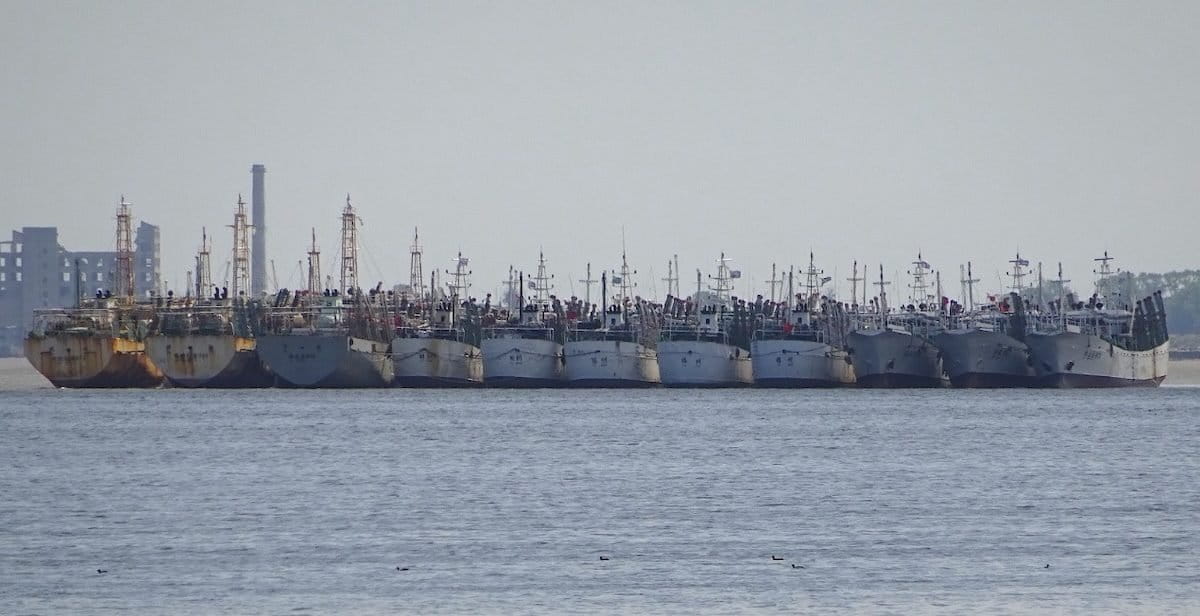
 news.mongabay.com
news.mongabay.com
Kanadassa on testattu "oikean" sukellusveneen, brittiläisen Oberon-luokan vene HMCS Ojibwa, käyttöä Kanadan kalastuvyöhykkeen (EFZ, Exclusive Fishing Zone) valvonnassa vuonna 1993 Operation Ambuscade:ssa, jonka tavoitteena oli saada salakalastajia kiinni "rysän päältä" kalastusvyöhykkeellä. Lainauksissa DFO = Department of Fisheries and Oceans.
"DFO's solution was to deter poachers. Commander Marsaw's orders were to conduct a patrol with a DFO officer on board. The Ojibwa's primary missions were to detect, track, identify, and initiate the apprehension of violators. Her secondary missions were to produce photographic, acoustic, and electronic information. Some of this would be used as evidence, and some for intelligence purposes. The priority was in gathering evidence."
"In its analysis, DFO compared the use of the submarine to its more conventional methods. Helicopters had some "covert capability" but had limited range and endurance and were weather dependent. Patrol vessels could stay on station, maneuver, and send out boarding parties—but they were not covert, and again, there were weather limitations. Though submarines had limitations—for example, their primary strength precluded them from apprehension—DFO concluded that "no other DFO platform has the ability to covertly track, locate, identify, and monitor vessels in fog." In addition, DFO did not have the capability to "obtain the distinctive acoustic signatures of fishing vessels." There were, however, concerns that "hostile fishermen could fire weapons at or attempt to ram a submarine" and that nets and other fishing gear complicated the problems of submerged movement in a high-density fishing area."
Mielestäni hyvässä artikkelissa on selostettu sukellusvenevalvonnan teknisiä, taktisia, juridisia jne aspekteja.

 www.usni.org
www.usni.org
HMCS Ojibwan wikiartikkeli:
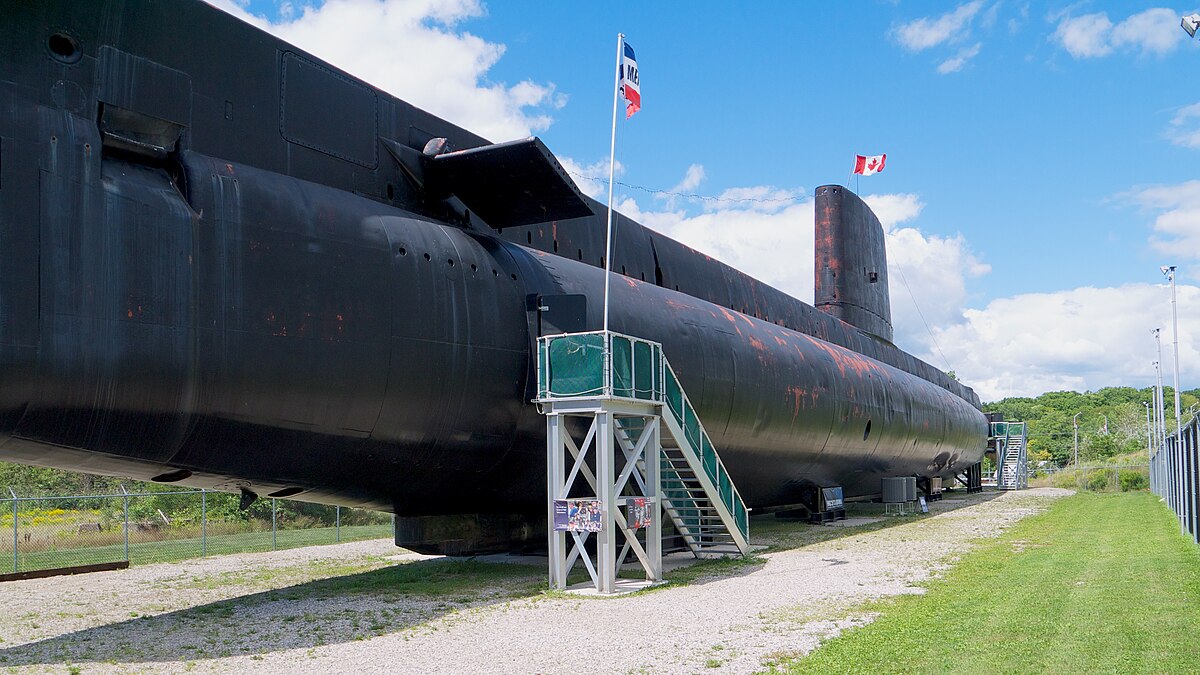
 en.wikipedia.org
en.wikipedia.org
Defenseworldin artikkeli, jossa havainnekuva ilmeisesti Strazhin varhaisemmasta variaatiosta:

Rubinin tiedote:
The BOSS: New Look, New Features
"Rubin presents the second version of BOSS patrol ship that combines the benefits of a submarine and a surface patrol ship. It is the largest version with 72 m length and surface displacement about 1300 t. Large dimensions bring more capabilities. New lines with wave-piercing bow and tumblehome hull reduce roll, make ship more stable weapon platform and reduce radar signature as well. Sonar array in bow bulb works in better conditions and the bulb itself reduces surface drag. High-power propulsion system allows speed up to 21 kt.This version is maximally armed with autocannon, two guided-missile launchers and four 324 mm torpedo tubes. Such weapon package makes BOSS a formidable enemy for even much larger ships. As in other versions, this ship has two pressure-proof multifunctional hangars for boarding teams boats and equipment, unmanned aerial vehicles or other payload. Both radar and sonar can be used for search and target acquisition, allowing discreet detection and approach.
The ship can be used in anti-submarine exercises and training of crews for classical submarines. The cruising range is up to 4000 miles at 10 kt, and can be increased on Customer's request.
As military budgets decrease due to pandemia and its consequences, Navies' demand shifts to multifunctional ships. Our response to this challenge is a combination of surface and underwater capabilities in the BOSS project. Due to such synthesis the ship intended for peacetime use retains its relevance as a combat unit in case of a conflict escalation. Moreover, the diving capability allows BOSS to fulfill typical patrol duties in its own innovative ways, some of this ways being cheaper and simpler.
The BOSS project is developed as adaptable, its modifications and variable characteristics allow to offer the ship that corresponds to the Customer's needs, conditions and capabilities to the maximum eхtent."
Yksi konseptin lähtöajatuksista saattaisi olla, että valtamerten rantavaltioilla on käyttöä näkymättömälle valvonnalle suurten talousvyöhykkeidensä (EEZ) suojaamiseksi salakalastukselta, koska salakalastajilla saattaa olla hyväkin valmius havaita pintavalvonnan läsnäolo. Alla esimerkkinä artikkeli laajamittaisesta salakalastuksesta Argentiinan talousvyöhykkeellä:
"A new report from the NGO Oceana revealed that 800 foreign vessels from China, Taiwan, South Korea and Spain conducted 900,000 hours of visible fishing near Argentina’s exclusive economic zone (EEZ), but that there were more than 600,000 additional hours in which fishing vessels went “dark” by turning off their automatic identification systems (AIS)."

‘Dark’ ships off Argentina ring alarms over possible illegal fishing
Last year, news of a fleet of about 300 Chinese fishing vessels swarming around the Galápagos Islands, possibly to fish illegally, grabbed the attention of the world. But there’s a similar scenario playing out off the coast of Argentina: each year, hundreds of foreign-owned vessels are also...
Kanadassa on testattu "oikean" sukellusveneen, brittiläisen Oberon-luokan vene HMCS Ojibwa, käyttöä Kanadan kalastuvyöhykkeen (EFZ, Exclusive Fishing Zone) valvonnassa vuonna 1993 Operation Ambuscade:ssa, jonka tavoitteena oli saada salakalastajia kiinni "rysän päältä" kalastusvyöhykkeellä. Lainauksissa DFO = Department of Fisheries and Oceans.
"DFO's solution was to deter poachers. Commander Marsaw's orders were to conduct a patrol with a DFO officer on board. The Ojibwa's primary missions were to detect, track, identify, and initiate the apprehension of violators. Her secondary missions were to produce photographic, acoustic, and electronic information. Some of this would be used as evidence, and some for intelligence purposes. The priority was in gathering evidence."
"In its analysis, DFO compared the use of the submarine to its more conventional methods. Helicopters had some "covert capability" but had limited range and endurance and were weather dependent. Patrol vessels could stay on station, maneuver, and send out boarding parties—but they were not covert, and again, there were weather limitations. Though submarines had limitations—for example, their primary strength precluded them from apprehension—DFO concluded that "no other DFO platform has the ability to covertly track, locate, identify, and monitor vessels in fog." In addition, DFO did not have the capability to "obtain the distinctive acoustic signatures of fishing vessels." There were, however, concerns that "hostile fishermen could fire weapons at or attempt to ram a submarine" and that nets and other fishing gear complicated the problems of submerged movement in a high-density fishing area."
Mielestäni hyvässä artikkelissa on selostettu sukellusvenevalvonnan teknisiä, taktisia, juridisia jne aspekteja.

Canadian Subs Protect Fisheries
What to do when foreign fishing vessels violate your waters? The creative Canadian solution was to patrol the area in diesel submarines.
HMCS Ojibwan wikiartikkeli:

HMCS Ojibwa - Wikipedia
Defenseworldin artikkeli, jossa havainnekuva ilmeisesti Strazhin varhaisemmasta variaatiosta:





